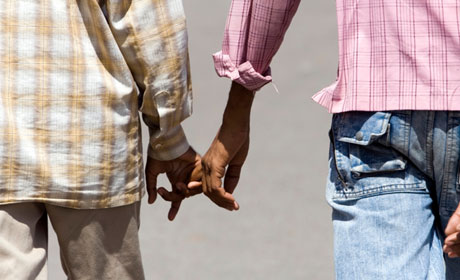
All Youth Deserve To Feel Safe. Bullying Is A Human Rights Violation.
Questioning or accepting one’s sexual orientation can be a difficult process for teens, especially when coupled with the other stresses of adolescence. Approximately 4% of teens identify as lesbian, gay, bisexual, or questioning (LGBTQ). These kids are more likely to be victims of bullying, sexual harassment and physical abuse and face a greater risk of social isolation.
The bullying experienced by LGBTQ youth is similar to other types of bullying in adolescence, but it is particularly hurtful because these kids are keenly aware of society’s heterosexual bias.
Types of Bullying Experienced By LGBTQ Youth
Physical Bullying
Hitting, kicking, shoving, spitting, stealing or damaging property.
Verbal Bullying
Name-calling, mocking or hurtful teasing, humiliating or threatening someone, racist or sexist comments.
Social Bullying
Excluding others from the group, gossiping or spreading rumours, setting others up to look foolish, and damaged friendships.
Cyberbullying
Using email, cell phones, text messages and internet sites to threaten, harass, embarrass, socially exclude, or damage reputations and friendships.
Signs Of Victimization Among LGBTQ Youth
LGBTQ youth often suffer from depression or problem behaviours. They live with the threat of discrimination and violence, and the fear that friends and family will not support them in their decision to come out. LGBTQ youth may suddenly withdraw from family and friends to avoid discussing their sexual orientation concerns. They may act out against parents or peers to distract questions about their sexual orientation, or in defense against real (or feared) rejection and harassment.
Other Signs LGBTQ Youth May Be Being Bullied
How Parents Can Help
There is a very high risk of drug and alcohol abuse, depression, aggressive behaviour and suicide for bullied LGBTQ youth. Unconditional and instant support from a parent can give a teen struggling with his or her sexual identify the strength to deal with victimization and feelings of isolation.
Strategies For Parents To Help LGBTQ Youth Deal With Bullying
Lead By Example
Demonstrate tolerance and acceptance of all sexualities and diversities. Do not tolerate homophobic slang for LGBTQ. Do not support media that is making fun of LGBTQ issues.
Challenge Your Own Assumptions
Don’t automatically assume your child or his or her friends are heterosexual or “straight” as it could inhibit your child from seeking your support. Identify your own misconceptions and stereotypes about LGBQT issues.
Encourage Youth To Report
It is the parents’ job to deal with bullying. LGBTQ youth are often afraid to come forward for fear of victimization or because they are not “out”. Let your child know that you want to hear about every incident of bullying and harassment.
Listen Closely, Respond Quickly
Parental support can be a powerful weapon against the negative effects of victimization. LGBTQ youth may deny bullying out of shame or fear so parents must be aware of the signs of bullying. Treat every incident as important and intervene on your child’s behalf.
Be Inclusive Of All Youth
Children are influenced by how their parents act. Create positive connections among LGBTQ youth by encouraging and reinforcing respectful and cooperative behaviour whenever you see it. Treat LGBTQ youth as members of your family, that you would not tolerate being hurt of embarrassed.
Reduce The Chances For Bullying
Surround your adolescent by youth who will stand up for him/her. Enrol in a school, community groups and organized activities that support LGBTQ issues. Work with your adolescent’s school to promote a tolerant environment.
Seek outside support
LGBTQ youth who are bullied often have difficulties with depression and self-esteem. Counsellors can provide support through individual counselling or support groups for LGBTQ adolescents who are having difficulty fitting in, and who may be marginalized or targeted by peers.
Publically Support LGBTQ Issues
Speak up for LGBTQ youth heard by contacting the people responsible for policy development in schools boards and provincial and federal governments. Increase policy makers’ sensitivity to the issues faced by these youth. Support policies that recognize the existence of homophobic bullying.
